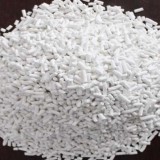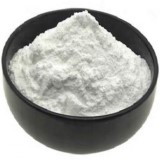|
|
Soda Lime ---- Sodium Acetate ---- Sodium Adipate ---- Sodium Alginate ---- Sodium Ascorbate ---- Sodium Benzoate ---- Sodium Bicarbonate ---- Sodium Bisulfate ---- Sodium Borate, Borax ---- Sodium Bromate ---- Sodium Bromide ---- Sodium Butyl Paraben ---- Sodium Butyrate ---- Sodium Caprylate ---- Sodium Chloride ---- Sodium Citrate ---- Sodium Diacetate ---- Sodium Erythorbate -- Sodium Ethyl Paraben ---- Sodium Formate ---- Sodium Gluconate ---- Sodium Glycerophosphate ---- Sodium Formaldehyde Bisulfite ---- Sodium Hyaluronate ---- Sodium Hydroxide ---- Sodium Lactate ---- Sodium Lactobionate ---- Sodium Lauryl Sulfate ---- Sodium Methyl Paraben ---- Sodium Metabisulfite ---- Sodium Molybdate ---- Sodium Nitrate ---- Sodium Nitrite ---- Sodium Oleate ---- Sodium Perborate ---- Sodium Persulfate ---- Sodium Phosphate Monobasic ---- Sodium Phosphate Dibasic ---- Sodium Phosphate Tribasic ---- Sodium Picosulfate ---- Sodium Propyl Paraben ---- Sodium Propionate ---- Sodium Saccharin ---- Sodium Selenate ---- Sodium Selenite ---- Sodium Stibogluconate ---- Sodium Sulfate ---- Sodium Sulfide Nonahydrate ---- Sodium Tartrate ---- Sodium Thiosulfate ---- Benzyl Benzoate ---- Selenious Acid |
Soda Lime Granules Pallets Powder Specifications of Commercial Pure & BP Ph Eur USP NF Analytical Reagent Grade Manufacturers & Exporters
Soda Lime USP Grade Specifications: DEFINITION IDENTIFICATION Analysis: Dry at 105C for 2 h. Acceptance criteria: 12.0% to 19.0% Carbon Dioxide Absorbency: Analysis: Fill the lower transverse section of a U-shaped drying tube of 15-mm internal diameter and 15-cm height with loosely packed glass wool. In one arm of the tube, place 5 g of anhydrous calcium chloride, and weigh the tube and the contents. In the other arm, place 9.5 to 10.5 g of Soda Lime, and again weigh. Insert stoppers in the open arms of the tube, and connect the side tube of the arm filled with Soda Lime to a calcium chloride drying tube, which in turn is connected to a suitable source of supply of carbon dioxide. Pass the carbon dioxide through the tube at 75 mL/min for 20 min, accurately timed. Disconnect the tube, cool to room temperature, remove the stoppers, and weigh. Acceptance criteria: NLT 19.0% increase in weight of the Soda Lime used for the test. Hardness: Sample: 200 g Analysis: Screen the Sample on a mechanical sieve shaker having a frequency of oscillation of 285±3 cycles/min, for 3 min, to remove granules both coarser and finer than the labeled particle size. Weigh 50 g of the granules retained on the screen, and place them in a hardness pan that has a diameter of 200 mm and a concave brass bottom 7.9 mm thick at the circumference and 3.2 mm thick at the center, with an inside spherical radius of curvature of 109 cm. Add 15 steel balls of 7.9-mm diameter, and shake on a mechanical sieve shaker for 30 min. Remove the steel balls, brush the contents of the hardness pan onto a sieve of the fine-mesh size designated on the label, shake for 3 min on the mechanical sieve shaker, and weigh. Acceptance criteria: NLT 75.0% of Soda Lime is retained on the screen. Moisture Absorption: Sample: 10 g Analysis: Place the Sample in a tared 50-mL weighing bottle having a diameter of 50 mm and a height of 30 mm, and weigh. Then place the bottle, with cover removed, for 24 h in a closed container in which the atmosphere is maintained at 85% relative humidity by being in equilibrium with sulfuric acid having a specific gravity of 1.16. Weigh again. Acceptance criteria: The weight increase is NMT 7.5%. Particle Size Distribution Estimation by Analytical Sieving: Sample: 100 g Analysis: Screen the Sample for 5 min as directed, using a mechanical shaker. Acceptance criteria: It passes completely through a No. 2 standard-mesh sieve, and NMT 2.0% passes through a No. 40 standard-mesh sieve. NMT 7.0% is retained on the coarse-mesh sieve, and NMT 15.0% passes through the fine-mesh sieve designated on the label. Soda Lime BP Specifications DEFINITION CHARACTERISTICS IDENTIFICATION TESTS Soda Lime Analytical Reagent Grade Specifications REQUIREMENTS MAXIMUM ALLOWABLE |
Crystal Clear Products and the group companies are manufacturing chemicals since several decades. We have automatic vacuum operated titanium evaporators and SS316 equipments to produce top grade of chemical products. We have toll manufacturers and representatives in China, UAE, Europe, Canada & USA and agents & customers in all countries like USA, Canada, Europe, UAE, South Africa, Tanzania, Kenya, Egypt, Nigeria, Uganda, Turkey, Mexico, Brazil, Chile, Argentina, Bangkok Thailand, Kaula Lumpur Malaysia, Dubai UAE etc. & sales representative in Chicago, Houston New York & Los Angeles, USA. Associated units are FDA-GMP certified, Halal and/or Kosher certified, REACH registered, ISO-9001, ISO-22000 HACCP certified, Crisil Rated.
Contact Soda Lime Granules Pallets Powder IP BP Ph Eur EP JP USP NF ACS Analytical Reagent FCC Food Grade manufacturers exporters at:

Crystal Clear Products
Plot No-C1-1031-9, GIDC Estate, Panoli, Ankleshwar, Gujarat - 393002. India
Telephone Mobile: 91-7506449333; e-mail: info@crystalclearproducts.org
e-mail: info@crystalclearproducts.org
Manufacturers, Suppliers of IP BP Ph Eur EP JP USP NF FCC Food, ACS Reagent GMP Grades of Chemicals like Soda Lime Granules Pallets Powder





